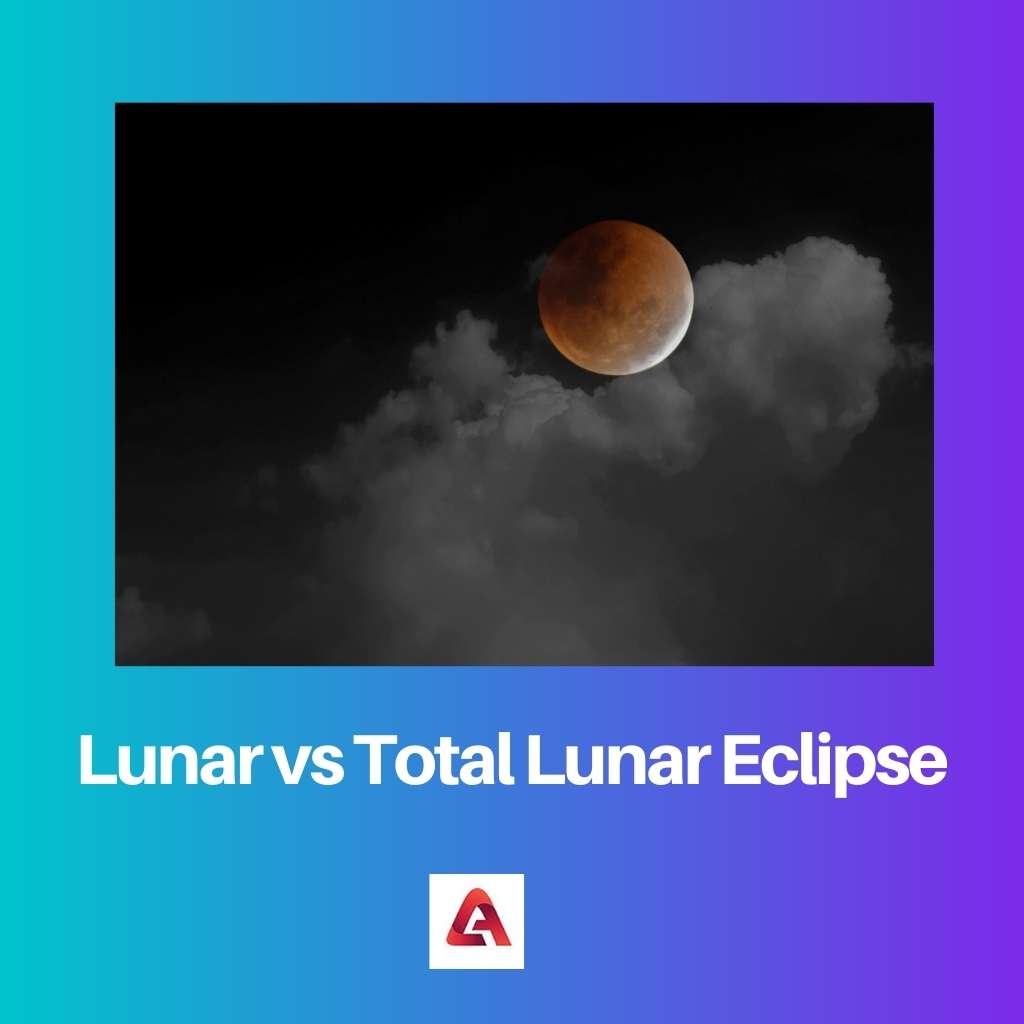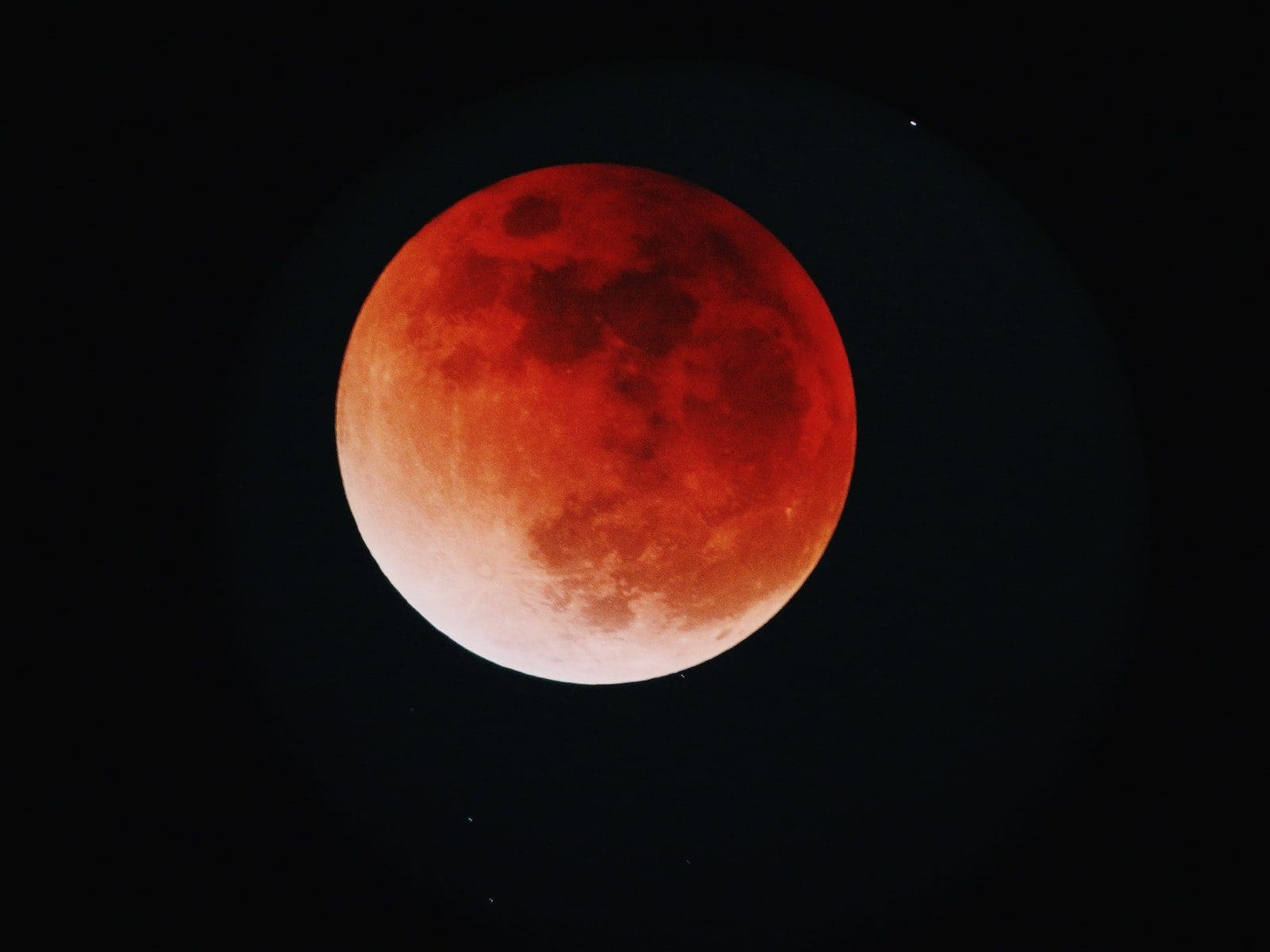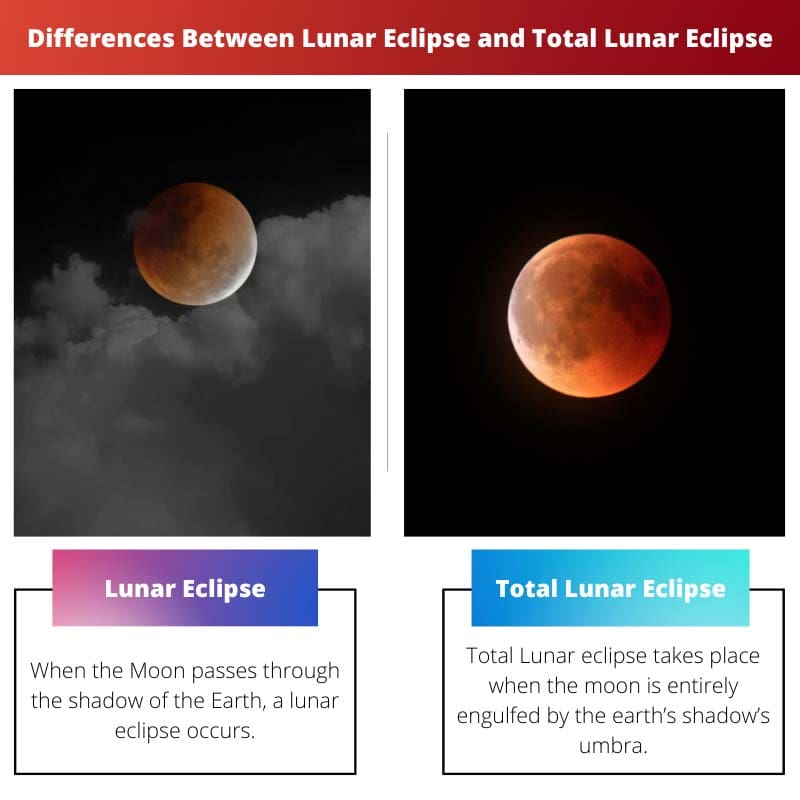Eclipse is one of the most interesting phenomena that has attracted many people, especially scientists and scholars; it is also considered a sacred event in the Hindu religion.
As the Earth travels directly between the sun and the moon, obstructing the sun’s light, Earth’s shadow falls on the moon, which results in Lunar Eclipse.
Key Takeaways
- A lunar eclipse occurs when the Earth comes between the Sun and the Moon, casting its shadow on the Moon, while a total lunar eclipse is when the Earth’s shadow completely covers the Moon.
- During a total lunar eclipse, the Moon appears red or orange, while a partial or penumbral lunar eclipse may have little or no noticeable color change.
- Total lunar eclipses are less frequent than partial or penumbral lunar eclipses, making them rarer celestial events.
Lunar vs Total Lunar Eclipse
The difference between Lunar Eclipse and Total Lunar Eclipse is that when the sun, the Earth, and the moon align, the moon slips into Earth’s shadow, creating a lunar eclipse.
On the other hand, in a Total lunar eclipse, the entire moon is engulfed by the umbra, the darkest component of Earth’s shadow.
This celestial event only takes place during a full moon day.

A Lunar Eclipse occurs when the Earth blocks some or all the sun’s rays from reaching the moon, which takes place once every twenty-nine and half days, or the length of one complete moon orbit around the Earth.
The moon’s orbit is tilted a few degrees in correspondence to the Earth. As a result, the Earth, moon, and sun don’t always align.
Hence, Lunar Eclipses do not occur every month.
The sun’s shadow on the Earth is divided into two portions.
The umbra is the darkest portion of the Earth’s shadow; humans can’t see the sun from the Umbra, and the penumbra is a much lighter portion of the Earth’s shadow.
When the sun, moon, and Earth line up, it is either a new or full moon or Syzygy.
While the moon crosses Earth’s orbital plane at Syzygy when it’s complete, it enters the umbra, giving us a Total Lunar Eclipse.
Comparison Table
| Parameters of Comparison | Lunar Eclipse | Total Lunar Eclipse |
|---|---|---|
| Definition | When the Moon passes through the shadow of the Earth. | It takes place when the Sun, Earth, and Moon align |
| Times of occurrence | A total Lunar eclipse takes place when the moon is entirely engulfed by the Earth’s shadow’s umbra. | It can last for nearly two hours |
| Last For | There are eight stages | Last for only a few minutes |
| Stages of Eclipse | There are seven stages | Colour of Moon |
| A total Lunar eclipse takes place when the Earth’s shadow’s umbra entirely engulfs the moon. | Mainly Red | Colours vary from sunset red, dark brown, and dark red to yellow or bright orange. |
What is Lunar Eclipse?
For thousands of years, skywatchers have been enthralled by Lunar Eclipses. It happens when the Earth’s shadow stops the sun’s light from refracting off the moon.
When the Earth eclipses the sun, it casts two types of shadow on the moon, an enormous shadow known as the penumbra and a smaller, darker shadow known as the umbra.
There are three types of Lunar Eclipse:
a) Total Lunar is the most striking of the three because it turns the moon a sunset red; the brightness of the moon’s red glow depends on the dust and clouds present in the Earth’s atmosphere.
b) Partial Lunar eclipse occurs when the Earth, the moon, and the sun don’t perfectly align, so only a part of the moon passes into Earth’s umbra.
c)Penumbra Lunar Eclipse happens when the Moon is submerged in the Earth’s penumbral cone without reaching the umbra.
A Lunar Eclipse happens up to three times a year, and unlike a Solar Eclipse, it is safe to stare at the moon with the naked eye.
We can only see a Total Lunar Eclipse because of the Sun and Moon’s respective distances from the Earth. The Moon is distancing itself from the Earth every year, and one day, billions of years from now, it will be too far away to fall totally under the Earth’s umbral shadow.

What is Total Lunar Eclipse?
When the Earth passes between the sun and the moon, its shadow falls on the moon, causing a Total Lunar Eclipse.
When the eclipse reaches totality, observers can see the moon become reddish.
During a Total Lunar Eclipse, the entire moon is engulfed by the Umbra, the darkest portion of Earth’s shadow.
Up to 99.1% of the moon’s surface will be within Earth’s umbra during this eclipse.
Syzygy derives from the Greek word for being paired together and is the astronomical name for this form of alignment.
The sun, Earth, and moon must be nearly aligned in a line for a Lunar Eclipse to occur.
Or else the Earth would not be able to cast a shadow on the moon’s surface, preventing an eclipse.
A Total Lunar Eclipse occurs within a few minutes. However, the duration of completeness might range from a few seconds to over 100 minutes.
The Total Lunar eclipse of July 26, 1953, was the longest, it took 100 minutes and 43 seconds to complete.

Main Differences Between Lunar and Total Lunar Eclipse
- During a Lunar Eclipse, the moon enters the shadow of the Earth. Whereas the sun, Earth, and moon must all be aligned perfectly for a Total Lunar Eclipse.
- Every year, at least two Lunar Eclipses can go up to five. Whereas every 2.5 years, there is a Total Lunar Eclipse.
- A Lunar Eclipse has three phases, whereas a Total Lunar Eclipse comprises all three phases.
- When the moon passes through the Earth’s shadow, it causes a Lunar Eclipse. When the moon and sun are on the opposite side of the Earth, A Total Lunar Eclipse occurs.
- During the Lunar Eclipse, the color of the moon is red. However, in a Total Lunar Eclipse, the colour of the moon varies.


I find the article to be very informative and full of compelling insights into Lunar and Total Lunar Eclipse.
The level of detail in the article is outstanding, and it is a valuable source of information for anyone curious about Lunar and Total Lunar Eclipses.
This is just a good article to clarify the differences between Lunar and Total Lunar eclipses.
I see this article as an indispensable resource for individuals seeking a detailed understanding of Lunar and Total Lunar Eclipse.
I think the author has done an amazing job in summarizing the key differences between these two phenomena.
This article explains in detail and in a very humerus language the Lunar and Total Lunar Eclipse, all the explanations are straightforward and appealing to the reader.
A very well written article, providing a complete and thorough explanation of Lunar and Total Lunar Eclipses.
The article provides an excellent comparison between Lunar and Total Lunar Eclipses, and the information is easy to follow.
I believe this article is an excellent source of information for anyone looking to learn more about Lunar and Total Lunar Eclipse.
Great article! The way the information is presented makes for an easy read, and the level of detail included is super impressive.
The article offers an in-depth comparison of Lunar and Total Lunar Eclipse, for those who have a keen interest in these rare celestial events.